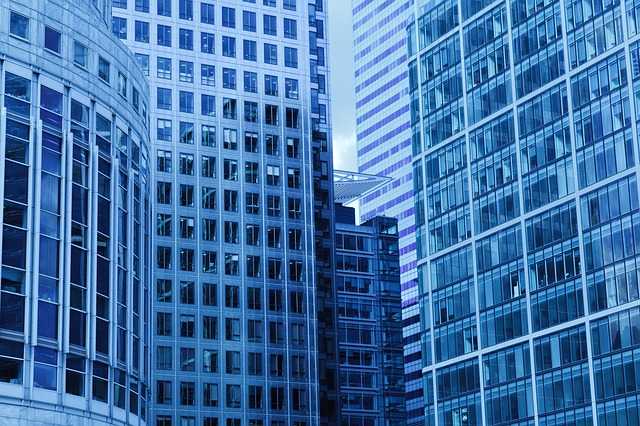
Being an owner of the commercial building is undoubtedly difficult. With all the challenges such as attracting and retaining tenants, facility supplies, property taxes, property insurance, etc. can make your head feel like it’s in a vice grip. Besides, rising energy costs also contribute to the challenges in managing the facility supplies budget in the building. With commercial buildings in Canada accounting for almost 14% of end-use energy consumption, you need to be aware of the many areas of potential savings.
Did you know an energy efficient building has greater market value? Yes, it’s a fact! This means you can save on money, attract interest, and new tenants. Let’s not beat around the bush and introduce you to potential ways on how you can increase the energy efficiency of your commercial building.
Incorporate Smart and Efficient Lighting
Benchmarking your energy performance is the first step of managing the project finance of your commercial building. Illuminating the areas in your building with advanced and smart lighting can help you benchmark your energy performance.
Lighting is ever-present in every building, but using it smartly makes you wiser. Using high-quality and energy efficient lighting such as an LED (light-emitting diode) with Power over Ethernet (PoE) can help you gain information about the maintenance requests, occupancy, and request temperature control.
Smart lighting is one of the largest investments for many green buildings and offices. It provides many benefits such as:
- Low capital expenditure,
- Improvement in space management an energy savings that lower expenditure costs,
- Reduction in carbon footprint, and
- Increase in the usage of flexible workspaces.
With enhanced in-built smart tools, it provides higher satisfaction and productivity ratings. You may also make the most of the sunlight through daylighting. Use certain spaces in your building to illuminate your building areas with the help of the sunlight. Though investing in these smart lighting can be expensive, there is a powerful return-of-investment. You’ll save more money over time with the long term usage.
Opt for Lighting Controls
Lighting controls can help you reduce your energy costs and also extend the lifespan of your lighting. Here are some examples that you can opt for in your building.
Dimmers – Dimmers allow for variation in the indoor light levels. These lights reduce the wattage and output and decrease energy consumption.
Motion sensors – These lights automatically turn on when any movement or motion is detected. It turns off after a while. Motion sensors are exclusively used outdoors where you do not need the constant presence of the light.
Occupancy sensors – These sensors detect any kind of activity in the area. When you have an occupied room the sensor is on and vice versa when it is unoccupied. Occupancy sensors also consist of Ultrasonic (sound) and Infrared sensors (heat and motion).
Check Your Ventilation
An energy efficient building must have energy recovery ventilation. Since your building will be airtight, you need the ventilation system to maintain good air quality. Ventilation helps to control moisture which can later cause growth, thus leading to structural damage. You may also consider HVAC (Heating, ventilation, and air conditioning) systems.
HVAC energy becomes an important element in both energy efficiency and Indoor Air Quality and health. These systems account for between 40-50 percent of commercial building energy. Improving the effectiveness of your HVAC systems, you can decrease energy consumption, lower operating costs, and reduce greenhouse gas emissions. Try to adjust your HVAC systems for significant savings. For instance, you can turn the temperature settings down in heating sessions and vice versa in winter sessions.
Have a Building Recommissioning
Commissioning is a quality management process applied to buildings during their design, construction, and operation. It is the single cost-effective strategy for reducing energy, costs, and greenhouse gas emissions in buildings today. Recommissioning is the re-optimization process that existing equipment and systems operate optimally. It consists of regularly scheduled reviews of equipment and building systems. Additionally, it also involves metering and monitoring HVAC systems. It creates a great opportunity for building owners to reduce energy costs and greenhouse gas emissions.
Perform Cleaning and Maintenance Program
HVAC systems – Ensure to clean the filters of the HVAC system and clear the obstructions like furniture and pillars from blocking the path. Cleaning the filter can reduce the load put on the system. When the filters are dirty, it prevents dust or dirt from building up in the system, thus leading to maintenance and early system failure. Maintaining the HVAC systems ensure its high efficiency, longevity, and the comfort level of the building.
Lighting – Dirty lighting will emit less light making them use more in the areas of the building. It is necessary to clean the lights properly and replace the non-working lights to provide better lighting to avoid much usage of other lights. A clean and reflective ceiling also contributes to better lighting. Building owners can lend some assistance from facility management solutions for facility supplies.
Select the systems that are easy to maintain and purchase safer cleaning facility supplies and maintenance services.
If your thinking of taking these tips and considering an integrated facility solution providing facility supplies for your commercial building, contact Peakman Management Group. With our diverse history of project experiences, we have achieved optimal management processes. We will also provide you with assistance along with facility supplies that can help you with your energy efficient strategies from our end.
